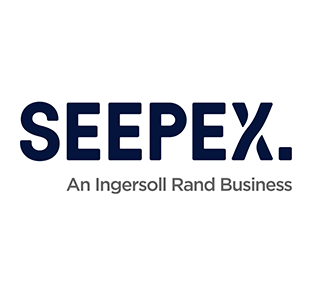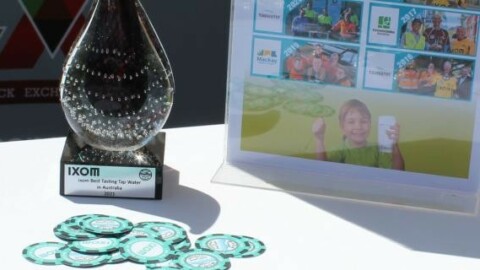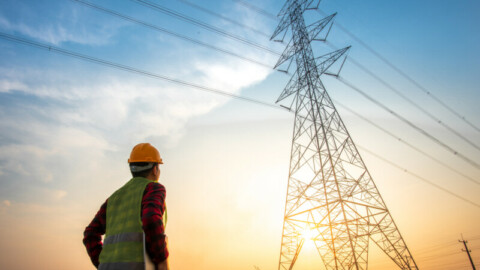By Steph Barker, Journalist, Pump Industry Magazine
Around half the energy used by the Australian manufacturing industry is due to industrial process heat. Kyneton-based meat producer Hardwick Processors took part in an ARENA-funded study on replacing fossil-fuelled process heating technologies in manufacturing industries with renewables-powered alternatives, and found that heat pumps played a key role in reducing their reliance on natural gas.
In 2019, the Australian Renewable Energy Agency (ARENA), in conjunction with the Australian Alliance for Energy Productivity (A2EP), funded the Renewable Energy for Process Heat Opportunity Study. The study sought to determine the technical and commercial feasibility of replacing fossil-fuelled process heating technologies in manufacturing industries with renewables-powered alternatives and provide detailed pathways to implementation.
At that time, ARENA said process heating was responsible for the largest share of fossil fuel use in Australian manufacturing, accounting for more than 40 per cent of use in the industry. Twenty pre-feasibility and seven feasibility studies were completed over two phases, covering a range of food, beverage and industrial processes. The studies considered the suitability of renewable energy options for these industries and applications – with a particular consideration of industrial heat pumps.
Kyneton-based meat producer Hardwick Processors was one of the seven manufacturers selected for a feasibility study. Hardwicks is a family-owned retailer and meat processor, which is run from a purpose built, state of the art facility at Kyneton in the Macedon Ranges, Victoria. Hardwicks was an ideal candidate for the study. The meat processing plant had been using a heat pump, which ran on non-renewable fuel, used for low temperature (~80°C) industrial process heat applications.
According to ARENA, these types of heat pumps are amongst the most accessible to supply with renewable energy, as heat pumps operate comfortably in this temperature range and can be powered with renewable energy. Despite this, around half of the total energy used by Australian industry is due to industrial process heat, typically using natural gas. ARENA identified the key barriers to increased uptake of renewable energy in the manufacturing sector as:
- The need (in some cases) for increased electrical supply capacity
- Low awareness and capability among technical service providers
- High capital cost of equipment compared with incumbent gas-fired boilers
- A need to operate at high capacity factors, often using thermal storage, to achieve an acceptable economic return
Reducing the reliance on natural gas for process heat represents a significant opportunity to decarbonise the Australian manufacturing industry and help companies save on potentially expensive gas. Hardwicks had already installed on-site renewable energy infrastructure of 2.5MW solar PV and a 2MWh battery storage system, making them an ideal candidate for the case study and solidifying their commitment to renewables.

Feasibility findings
The pre-feasibility and feasibility studies demonstrated that industrial heat pumps are economically and technically feasible for low temperature (<90˚C) heating applications, and can be superior to other renewable heating solutions (such as solar thermal or biogas from anaerobic digestion) where conditions are ideal – such as suitable temperatures, high-capacity factors and opportunities to integrate heating and cooling.
For Hardwicks, the feasibility study found that a smaller and less expensive heat pump, run continuously, and storing hot water in existing thermal storage tanks, would be the most efficient way of producing process heat. The new heat pump would connect to the existing renewable infrastructure, reducing reliance on gas and grid power.
However, making these changes would require additional changes to existing infrastructure to incorporate the new additions into the plant’s existing equipment. For success of the feasibility study prompted ARENA to allocate funding for Hardwicks as part of its Advancing Renewables Program.
The program offered grants to support businesses with funding or finance to develop renewable energy technologies, including optimising the transition to renewable electricity, commercialising clean hydrogen and supporting the transition to low emissions metals.
Hardwicks received funding of $838,000 to install a 1MW (thermal) demonstration scale heat pump and to upgrade the electrical supply system at its meat processing plant in Kyneton.
Transition challenges
As part of the grant requirements, Hardwicks reported on lessons learned during the project’s implementation. The reports identified key challenges and how Hardwicks solved them, also providing advice for future uptake for similar businesses.
The first challenge for Hardwicks came in the days leading up to the scheduled works, with Hardwicks’ network provider advising that they required a major communications device to remotely monitor and control the existing renewable assets of battery and solar. The battery and solar assets were vital to the project as they were to be used to power the new heat pump.
Hardwicks decided to move forward with the upgrade to keep the project on schedule, with the renewable assets being taken offline until the communications works could be executed. Hardwicks also wanted to reconfigure their renewable assets as part of the power upgrade.
These works had not been commissioned as part of the project, presenting significant short term cost implications and requiring additional grid power while the devices were offline. The field of renewable assets and having many small generators was a new area for the network provider to manage, adding to the difficulty and complexity of the transition.
Despite the challenges, Hardwicks said the network provider was very responsive and did everything in their power to get the renewable assets back on line as quickly as possible.
Hardwicks noted that a potential fix for the issue would be to have more formal face-to-face meetings with all the parties involved in the planning stages of the project, as this may have helped to identify potential problems and flag the issue at an earlier stage.

Another hurdle came with a scope change early on in the project’s execution. Prior to undertaking, the battery and solar assets fed back into the existing main low voltage (LV) switchboard. At the project’s conception, it was intended to maintain this arrangement to reduce both the complexity of the project and the number of modifications required to existing assets.
However, Hardwicks agreed to upgrade their electrical supply system to become a high voltage (HV) customer, taking any excess electricity required from the Powercor network. The HV upgrade was to ensure that the renewable assets fed into the plant at the head of the system, and balanced systematic distribution of renewable assets across the entire plant – including new electrical infrastructure and existing electrical assets.
It would also provide valuable insights into the electrical supply infrastructure requirements associated with electrifying process heat for industrial use. Because the network providers were inexperienced with the integration of small generation sources, the power upgrade
works were delayed. The power change over from LV to HV was scheduled to occur at the end of October 2022, but didn’t take place until the start of December 2022.
Thankfully, the delay had little impact on production. Hardwicks advised that integration of renewable assets into a HV upgrade should be included in the HV installation, to allow more straightforward upgrades for future renewable upgrades.
For complex integration works such as this, which involve both enhanced communication and renewable integration into the grid, very detailed planning and implementation needs to be factored into the works program regardless of the experience of stakeholders.
In addition, increased stakeholder meetings need to be considered to ensure understanding and capability of stakeholders meets the requirements of the project. As the project continued, Hardwicks found that retrofitting the heat pump and completing the HV upgrade to an existing plant required a large amount of work and analysis on Programmable Logic Controllers (PLC).
A PLC is an industrial mini computer that can receive data through its inputs and send operating instructions through its outputs.
Fundamentally, PLCs operate key pieces of machinery, ensuring logical programming of events and communication between components.
Most of the pumps in Hardwicks processing facility were run by PLCs, which included:
- A cold-water supply pump to fill the heat recovery tank. A level transducer measures the level in the tank and opens a control valve when the tank level drops.
- A primary supply pump driven locally from the output of a pressure transducer. The pump speed is varied to maintain a constant outlet head. This is designed to cater for the total flow downstream through the three heat recovery units on the screw compressor oil cooling circuits as well as the required water flow through the heat pump heat exchanger.
- Water supply to the heat pump, which is initiated once the heat pump compressor is operating. A valve is modulated when the heat pump compressor is started. When the pre-heat tank is in full flow and the hot water supply pump is switched off, the heat pump is instructed to switch off. This water flow condition is triggered by monitoring the water flow meter output on the heat pump water line. Once flow through the flow meter is reinstated, the heat pump will restart.
- Water supply to each of the three oil heat recovery units is initiated by opening three valves when each of the corresponding ammonia compressors are operating. Oil return temperature is measured on each of these compressors. If the oil return temperature measured is too high, it will trigger the existing oil cooling water pumps to switch on thus providing incremental cooling to each of the compressors oil circuits. Once oil temperature returns to the required set point the oil cooling water pumps will then switch off. If the return temperature monitored is too low it will trigger the three control valves to close. As the oil temperature increases and reaches the required level, then the valve will reopen.

Adding the new equipment presented a big challenge, as the PLCs required reprogramming to incorporate the new equipment and ensure that all the systems were able to communicate. Hardwicks navigated this by working with the existing refrigeration contractor, which helped to ensure that the heat pump was optimally integrated into the existing plant.
Hardwicks found that having long-term relationships with specialist contractors helped to de-risk projects, and was especially critical in this project. A large amount of plumbing and electrical works were carried out or supervised by Hardwicks internal tradesmen, and the refrigeration and heat pump works were carried out by the company’s main refrigeration contractor – who has carried out all works on the site for the past 25 years.
By using internal tradespeople and contractors with direct experience, Hardwicks ensured that maintenance staff had a very strong understanding of the operating system and could integrate the new assets without disrupting the existing plant operations.
A final challenge came from the initial analysis for the heat pump project. The analysis was carried out over three years prior to project completion, largely due to the availability of funding to support the investigation. Like many manufacturers, meat processing plants can be very dynamic, with production levels changing dramatically due to seasonal changes, weather patterns and world markets.
Plants can very rapidly change production levels over a short period – most plants are continually driving to increase volume, which delivers the highest economical outcome during prosperous times. Due to the variable production levels, water usage can regularly vary in excess of plus or minus 20 per cent.
For Hardwicks, between the first analysis and the completion of the installation of the heat pump, water usage across the site increased by 20 per cent. The project team managed this by balancing the heat pump hot water generation with the varying hot water demands of the processing plant.
Hardwicks said it is important to consider what flexibility is required to allow for operational variabilities of a processing facility. For this project, natural gas continues to provide some of the final heating, which has built greater flexibility into the project. It is important to obtain existing usage data (for this project, water and ammonia usage), to ensure that the scope of the project covers both ends of the usage spectrum.
Although this data monitoring can be a big expense prior to the commitment of moving forward with a project, it reduces the risk of incorrect equipment size selection and the need to further rely on nonrenewable energy to make up any shortfalls.
Decarbonising the future
The Hardwicks case study shows the potential for decarbonising the meat industry. While there are many challenges along the way, early planning with all stakeholders can help mitigate potential problems that may arise further down the road.
Hardwicks successful installation also highlights the importance of contractor experience and building relationships – intimate knowledge of existing operations goes a long way in helping to introduce new assets with minimal interruption and downtime.
Finally, understanding the full scope of a manufacturer’s operations is vital – research needs to account for the inherently variable nature of manufacturing production, ensuring that both ends of the spectrum can be supported by renewable energy.


















